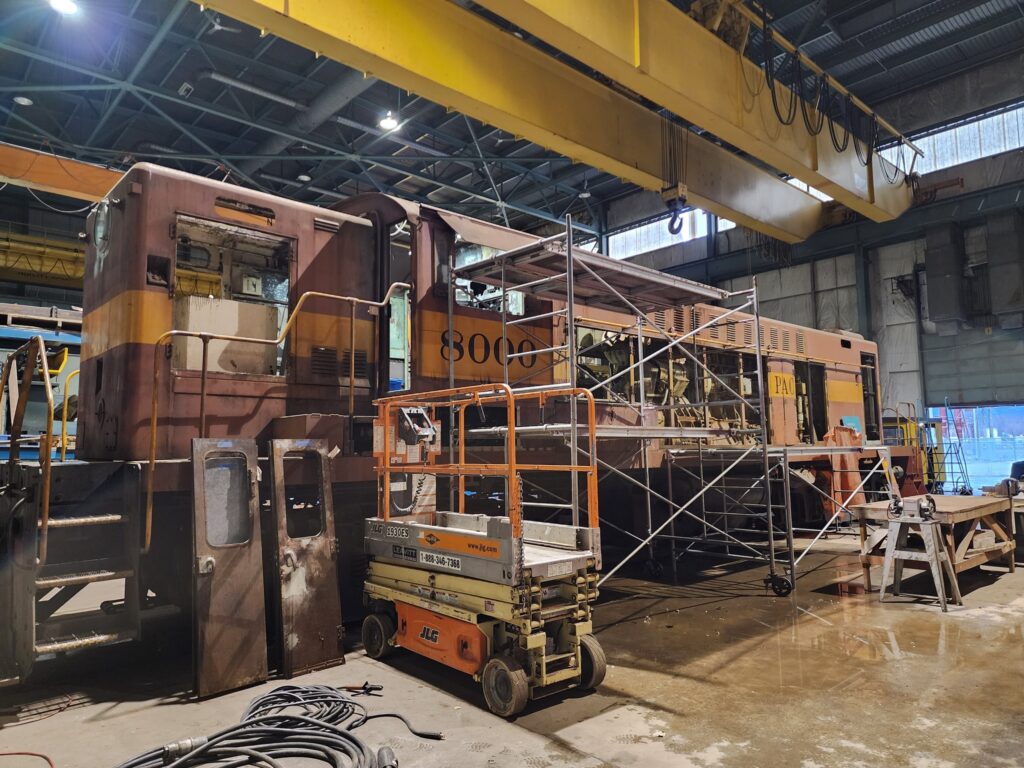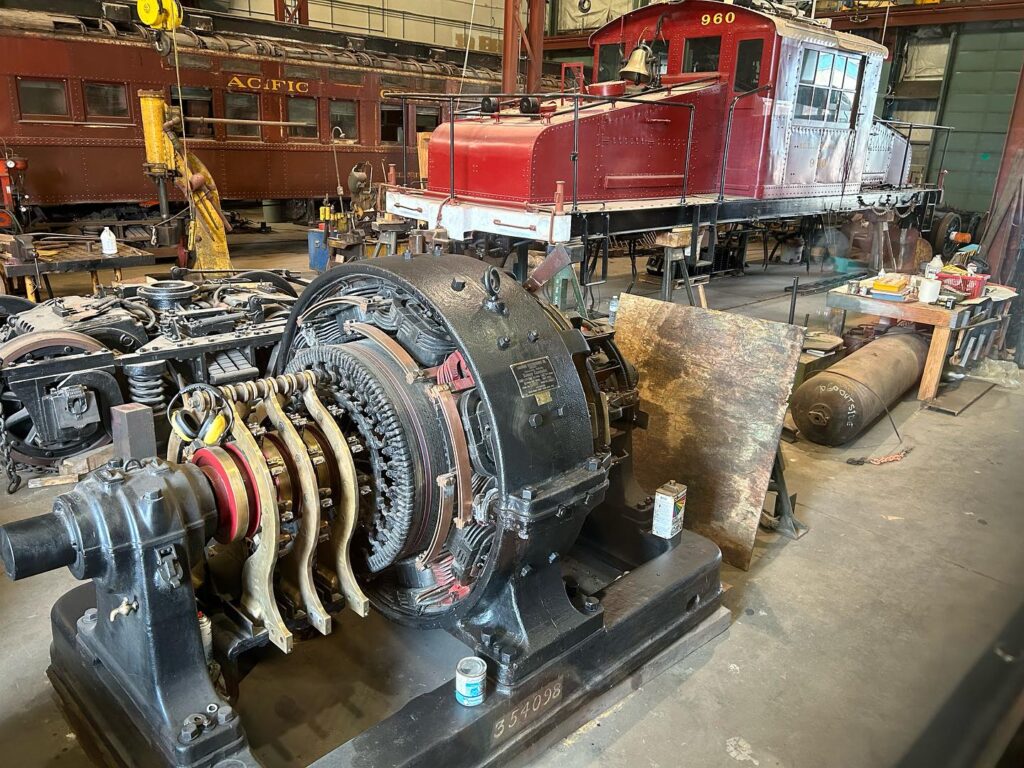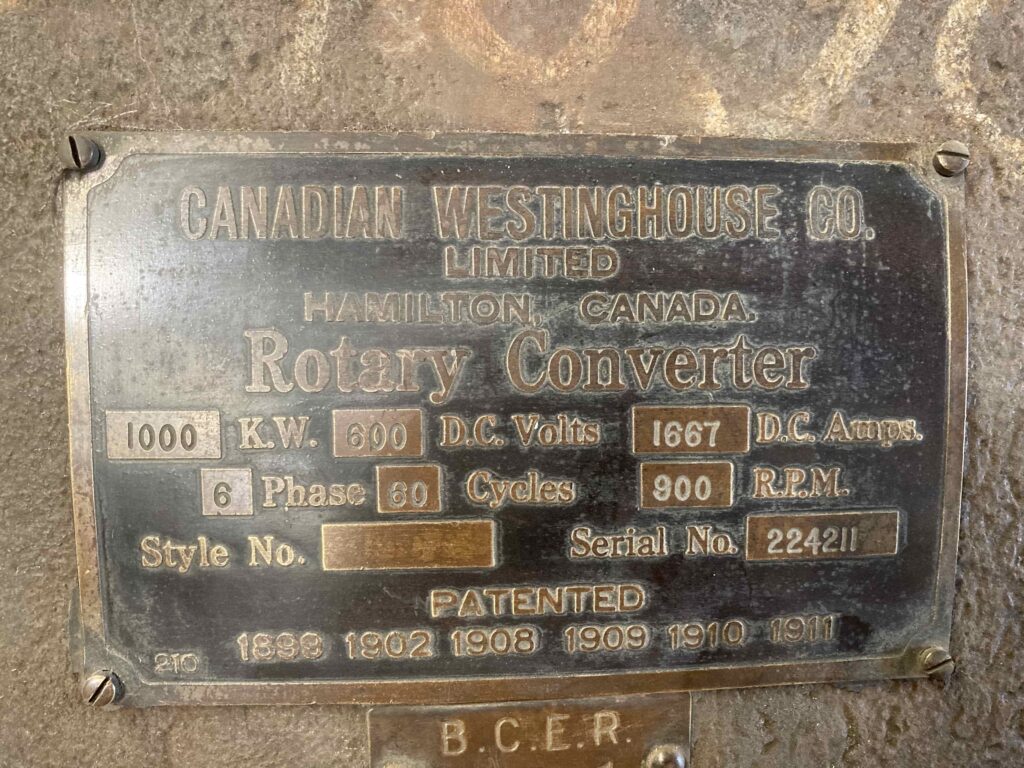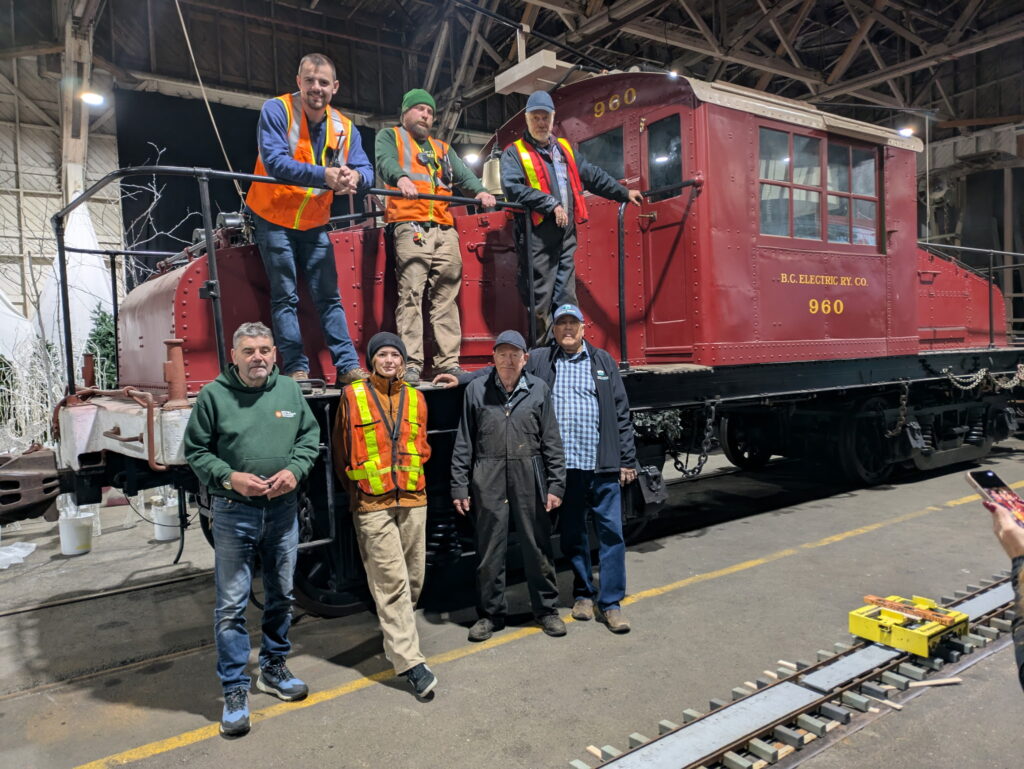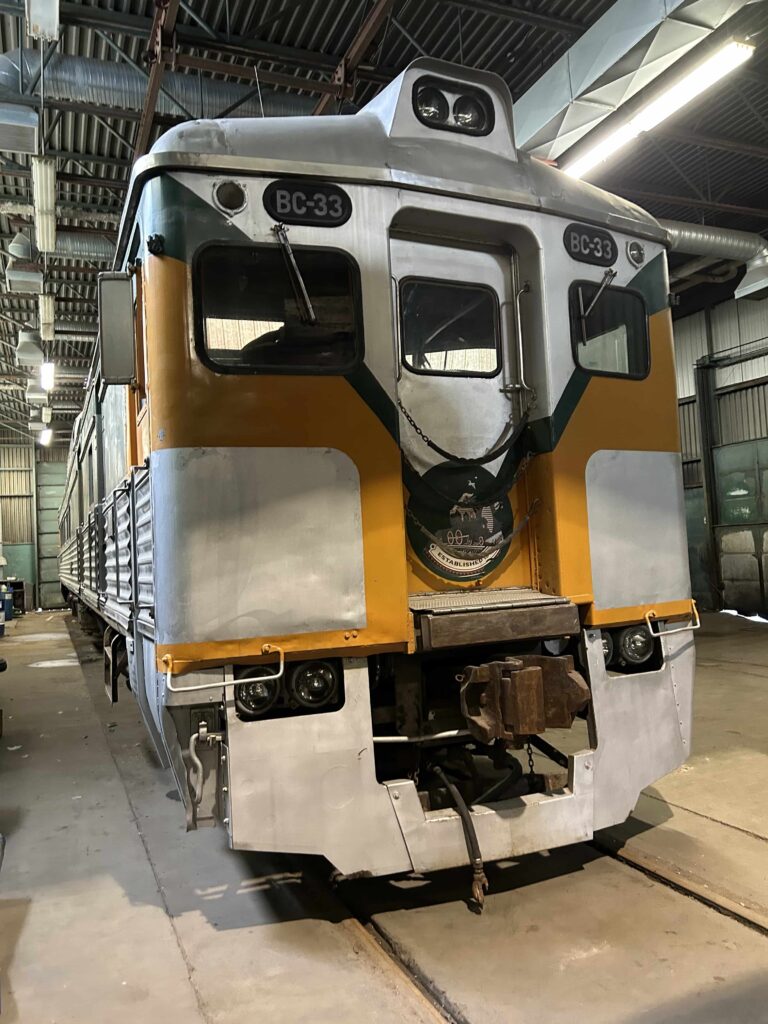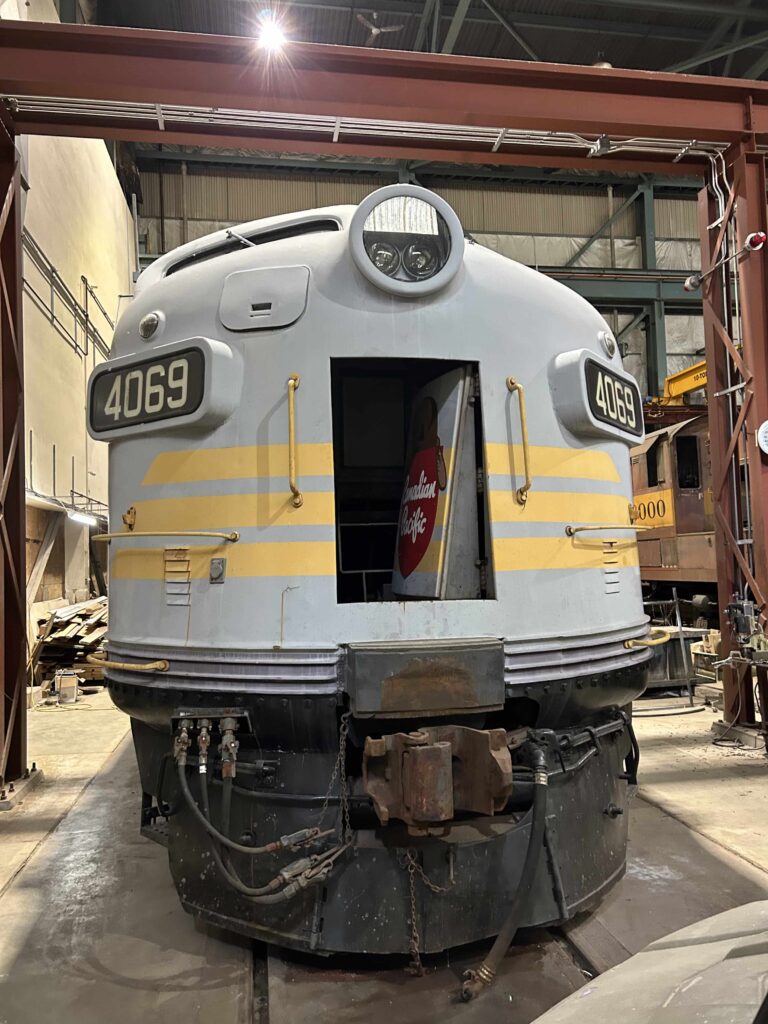Restoration projects underway
Canadian Pacific
Baldwin DRS-4-4-1000 Locomotive
The West Coast Railway Association, operators of the Railway Museum of BC, are committed to refurbish several historically significant pieces of BC’s Railway History. Restoring and repainting CP 8000 as a feature exhibit for static display is one of our biggest projects over the long term.
CP 8000 was the first of a class of 13 Baldwin DRS 4-4 1000’s built by the Canadian Locomotive Company in Kingston, Ontario, in 1948. This was the first road diesel obtained by Canadian Pacific.
CP’s Vancouver Island subsidiary, the Esquimalt and Nanaimo, was one of the first parts of the CPR to dieselize. The Baldwin road switchers spent their entire operating lives on Vancouver Island and were scrapped starting in 1973.
The locomotives have their builders plates as ‘CLC Kingston, Built to the design of Baldwin Locomotive Works-Eddystone, PA’
CP 8000 was saved by CP as part of their collection of historic locomotives, and spent many years outside in Quebec City and later Calgary.
It was donated to the West Coast Railway Museum in Squamish BC.
References available for Kyle:
https://www.trainorders.com/discussion/read.php?15,1956359
https://www.okthepk.ca/dataCprSiding/news/2011/11020410.htm
https://www.rrpicturearchives.net/LocoPicture.aspx?id=143480
B.C. Electric Railway Company #960
This locomotive, was built in July, 1912 and first owned by the Oregon Electric Railway as their No. 22. BC Electric bought it, along with 3 others, in 1946.
Three of them, including No. 960, were converted from 1200 Volts to 600V. They roll on spoked wheels.
The 960 laboured on until September, 1971, finishing its days as a switcher in the BC Electric Carrall Street yards on Pender Street in downtown Vancouver.
The locomotive was then acquired by the Royal British Columbia Museum and was put into storage on Mitchell Island in the Fraser River.
In 1993 the Royal British Columbia Museum donated No. 960 to the West Coast Railway Association and trucked the unit to Squamish. On Monday, April 19, 1993 No. 960 became the first piece of the WCRA collection to “come home” to the West Coast Railway Heritage Park (Now the Railway Museum of British Columbia).
BC Electric No. 960, built by ALCO & GE, July 1912.
nee Oregon Electric No.22; exx BCER No. 960, ex RBCM No. 960
BCER No. 960
at its new home in the carshop
Current Restorations Underway
BC-33 Budd RDC-3
BC-33, an RDC-3, is the second of our Rail Diesel Cars being restored for operation. This one will retain its yellow and green Pacific Great Eastern livery.
This RDC-3 configuration provided a combination of passenger, baggage, and mail services. It featured a 15-foot Railway Post Office section, a 17-foot baggage compartment, and a coach section with seating for about 49 passengers, along with engineer controls and restrooms at both ends.
The RDC-3 was part of a series of versatile railcars that were used for passenger and freight services on branch lines and commuter routes.
CP FP7A #4069
CP FP7A 4069 is one of our primary operational locomotives, and sees regular duty moving equipment around the museum, and working the North Pole Express at Christmas and private Dinner Trains during our regular season.
CP 4069 needs an ‘oil change’ and other regular maintenance to refurbish its paint, its batteries, and other equipment.
Pacific Great Eastern RS3 Diesel 561
Pacific Great Eastern 561 was built in 1951 by Montreal Locomotive Works. Putting out 1600 hp, the RS-3 is a freight workhorse, and is frequently seen in service at the park, switching trains in and out of the round house and turntable. This locomotive represents the first ‘road’ diesels operated by the PGE, and #561 was in service for over 35 years before being retired and acquired by the Museum.
CANADIAN PACIFIC 6503 S3 SWITCHER
Our S3 was one of the first bought by Canadian Pacific to test the value of the 660 hp non-turbocharged switcher. No. 6503 was originally assigned to Winnipeg and proved to be sturdy and reliable. The engine has been modified with a buffer plate on the ends, over the coupler, in order to handle passenger cars. This locomotive served the CPR in various locations across Canada until 1983. The unit then sold to United Grain Growers terminals in Vancouver, switching grain cars until it was retired in 1987 and acquired by the WCRA.


